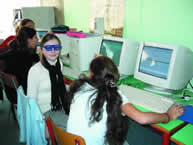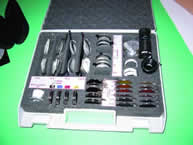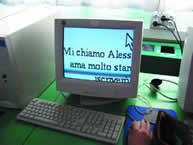|
Navigating Without Barriers by Federico Bartolomei In the field of high technology, it is possible to create Web
pages, or other multimedia products which do not exclude blind
people. | |
|
The world of Internet sites and Web pages has now become an every
day reality to which people are gradually getting used to. Recent studies
estimate that in the European Union there are close to 37 million persons
with disabilities of which 12 million have a visual impairment, whether
they are blind or low vision, and that a good number have difficulty
accessing this technological medium. If sites, and in particular those relating to public administration services, are not adapted to the specific needs of these persons, then an important number of citizens are seriously at risk of social exclusion. To encourage the development of human potential and social integration of persons who are blind is one of the objectives of Bologna's Institute for the Blind Francesco Cavazza. Based on an idea by Margherita Dini, teacher in public high school Carlo Pepoli in Bologna, a project was thought up to develop and disseminate among students the culture of Web accessibility for persons who have a visual impairment. The project Navigating Without Barriers was therefore born within the framework of the C.I.F.R.A. project, which means to sustain the integration, training, rehabilitation and personal independence of persons who are low vision or blind. It is an experimental project designed for sophomore students to teach them the use of Internet with the objective of instilling into students the knowledge and control of new technology according to good practices in universal access and creating awareness concerning social inclusion and diversity. Specifically, the objectives are for students to acquire the capabilities, following group work, of creating simple hypertexts and accessible Web pages, at the same time increasing their knowledge of anatomy, eye physiology and visual impairment. The course which contains 8 learning modules of 2 hours each, alternating between discussions on computer science and sight, has been agreed upon by students, parents and teachers. The efficiency of results has created the basis for an ulterior commitment and a more important involvement from the part of school institutions. |
|


